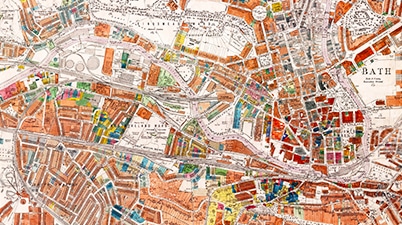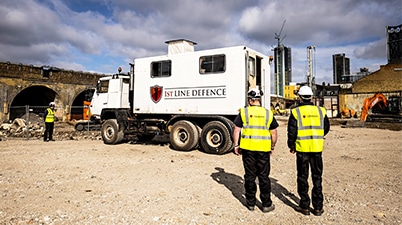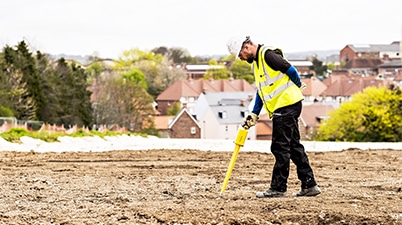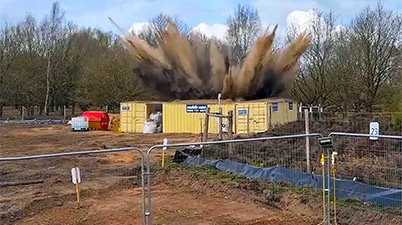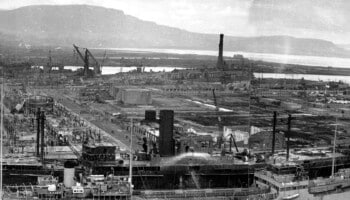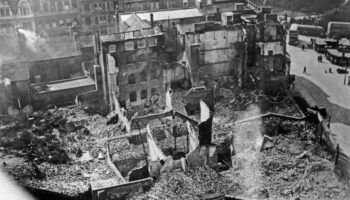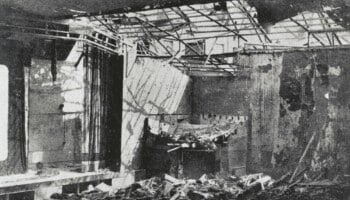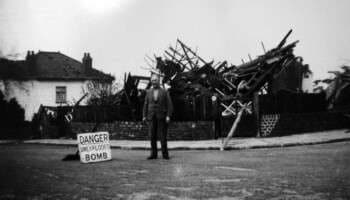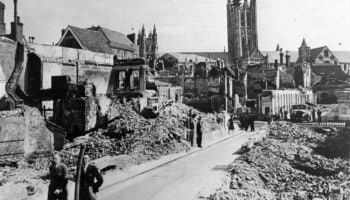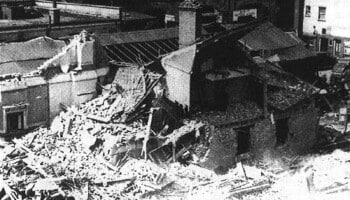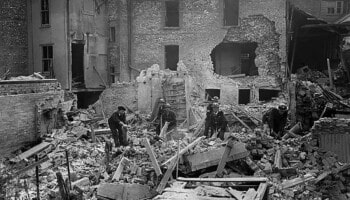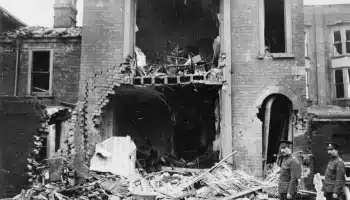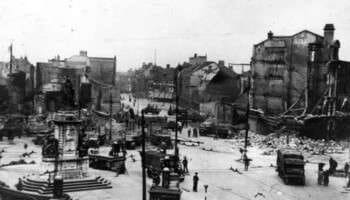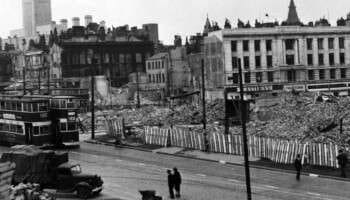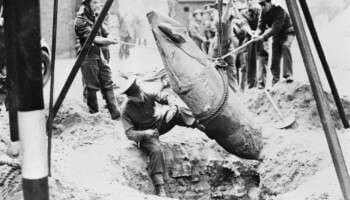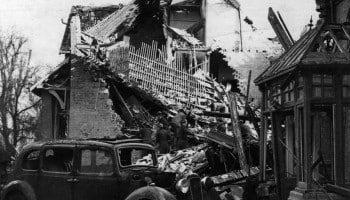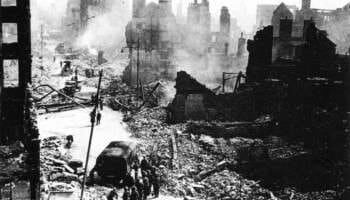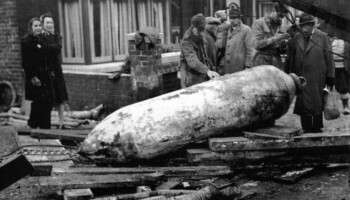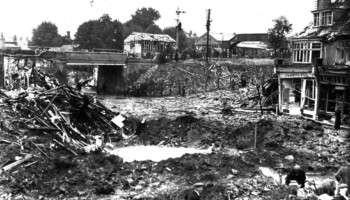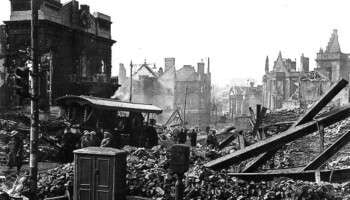Home » Resources » UXO City Guides »
UXO City Guide
Home Office Bombing Statistics for York
Record of German Ordnance dropped on the County Borough of York
High Explosive Bombs (All types)
129
Parachute Mines
0
Oil Bombs
0
Phosphorus Bombs
7
Fire Pots
42
Pilotless Aircraft (V-1)
0
Long-range Rocket Bombs (V-2)
0
Weapons Total
178
Area Acreage
6,409
Number of items per 1,000 acres
38.6
Why was York targeted and bombed in WWII?
While York was not a city of strategic importance due to its lack of industry compared to cities like London and Coventry, the city was specifically targeted by the Luftwaffe during the latter periods of the Blitz – in 1942.
The ‘Baedeker raids’ were a response after the Royal Air Force’s (RAF) attacks on Lubeck and Rostock, prompting retaliation raids of historic towns and cities in Britain1.
York’s limited industrial features were still actively targeted in addition to the historically significant buildings in the city centre.
In the early hours of 29 April 1942, in just under two hours – 92 people were killed, hundreds were injured and more than 9,000 buildings in the city were damaged2.
Home Office Bombing Statistics for York
York was not heavily bombed compared to other British cities, nevertheless the county borough sustained an overall low-moderate bombing density according to official Home Office bombing statistics, with an average of 38.6 items of ordnance recorded per 1,000 acres.
While York saw the brunt of the bombing in 1942, bombs were noted to have fallen in the borough as early as August 1940. These earlier incidents were infrequent and sporadic in nature, until the ‘Baedeckrer’ raids where the city was actively targetted.
Historic and culturally significant buildings (places of no direct military significance) in York were damaged by bombing, such as the Church of Martin Le Grand and the Guildhall, in order to terrorise the civilian population and lower morale.
Despite this, Luftwaffe target maps suggest that the railway infrastructure around York was also a bombing target.
Major bombing raids in York
11th August 1940 – Four individual bombs fell in the centre and outskirts of York. One of these bombs was an unexploded incident, located between Clifford’s Tower and Piccadilly.
November 1940 – A bomb fell near York Waterworks, but penetrated the soft ground and caused very little damage.
29th April 1942 – The Baedeker Blitz was the worst air raid to hit York. Some of the targets were the railway station, the carriageworks, the airfield. More than 70 German planes flew to York, with Allied planes shooting down four enemy aircraft. The raid started at 2.30am and finished approximately 90 minutes later, leaving 92 people dead and hundreds injured. The Guildhall and St Martin-le-Grand Church on Coney Street were destroyed. The Bar Convent collapsed after being damaged, killing five nuns – and many other buildings such as housing and schools were also damaged.
9th August 1942 – A lone enemy aircraft dropped four bombs in the centre of York. Despite two of the bombs being reported as unexploded, 1 person was killed, 9 injured and 36 suffered minor injuries3.
Fascinating facts about the bombing of York
- Approximately 1,000 air raid wardens were stationed in York during the war4.
- York railway station was considered a target due to the large number of trains carrying troops and cargo (sent to support the Russians)5.
- 110 British and 6 German Luftwaffe personnel were confirmed as fatalities as a result of the April 1942 raid6. 15 of the British who died were members of the military, with the remainder being civilians.
- Over 200 people were injured, and 6 Luftwaffe airmen were captured with many sustaining severe injuries7.
- Despite the many bombs dropped in the city, and the Luftwaffe targeting York due to its historic importance, York Minster was untouched by bombing during the war8.
Can UXO still pose a risk to construction projects in York?
The primary potential risk from UXO in York is from items of German air-delivered ordnance which failed to function as designed.
Approximately 10% of munitions deployed during WWII failed to detonate, and whilst efforts were made during, and after the war to locate and make UXBs safe, not all items were discovered.
This is evidenced by the regular, on-going discoveries of UXO during construction-related intrusive ground works across the UK – not just in York.
Occasionally items of British explosive ordnance are also encountered – often associated with WWII defensive measures or Home Guard operations. Allied UXO is also considered a risk in areas of York, with at least four Heavy Anti-Aircraft (HAA) Guns located in and around the city of York. The Rowntree Factory (County Industries Ltd) was also a filling factory that produced explosives during WWII and was located in the northern part of the city. The 14th (York) Battalion, West Riding Home Guard was also based in the city to defend York from potential enemy invasion.
I am about to start a project in York, what should I do?
Developers and ground workers should consider this potential before intrusive works are planned, through either a Preliminary UXO Risk Assessment or Detailed UXO Risk Assessment. This is the first stage in our UXO risk mitigation strategy and should be undertaken as early in a project lifecycle as possible in accordance with CIRIA C681 guidelines.
It is important that where a viable risk is identified, it is effectively and appropriately mitigated to reduce the risk to as low as reasonably practicable (ALARP). However, it is equally important that UXO risk mitigation measures are not implemented when they are not needed.
While there is certainly potential to encounter UXO during construction projects in York, it does not mean that UXO will pose a risk to all projects. Just because a site is located in York does not mean there is automatically a ‘high’ risk of encountering UXO. It really does depend on the specific location of the site being developed.
A well-researched UXO Risk Assessment will take into account location specific factors – was the actual site footprint affected by bombing, what damage was sustained, what was the site used for, how much would it have been accessed, what were the ground conditions present etc.
It should also consider what has happened post-war – how much development has occurred, to what depths have excavations taken place and so on. This will allow an assessment of the likelihood that UXO could have fallen on site, gone unnoticed and potentially still remain in situ.
Sources
1http://www.historyofyork.org.uk/themes/20th-century/york-bombed
2https://www.bbc.com/news/uk-england-york-north-yorkshire-17872823
3https://yorkmix.com/yorks-air-raids-the-unfolding-story-of-how-the-city-was-bombed-during-the-second-world-war/
4https://yorkmix.com/yorks-air-raids-the-unfolding-story-of-how-the-city-was-bombed-during-the-second-world-war/
5https://www.militaryhistories.co.uk/york/target_york
6https://www.militaryhistories.co.uk/york/casualties_overview
7https://www.militaryhistories.co.uk/york/casualties_overview
8http://www.historyofyork.org.uk/themes/20th-century/york-bombed
Recent UXO discoveries in York
Since the war, many items of UXO have been discovered across multiple cities within the UK, with York no exception. See the news articles below about UXO incidents and discoveries from national and local press in York.
1st Line Defence keep up-to-date with relevant and noteworthy UXO-related news stories reported across the UK, and you can browse through these articles using the buttons below.
Get UXO risk mitigation services from a partner you can trust
UXO City Guides
Got a project in York? Need advice but not sure where to start?
If you need general advice about UXO risk mitigation in York, get in touch.
Contact Us
* indicates required fields
